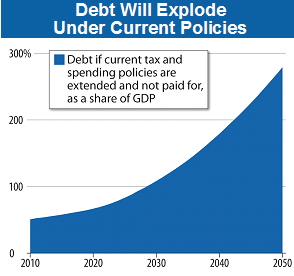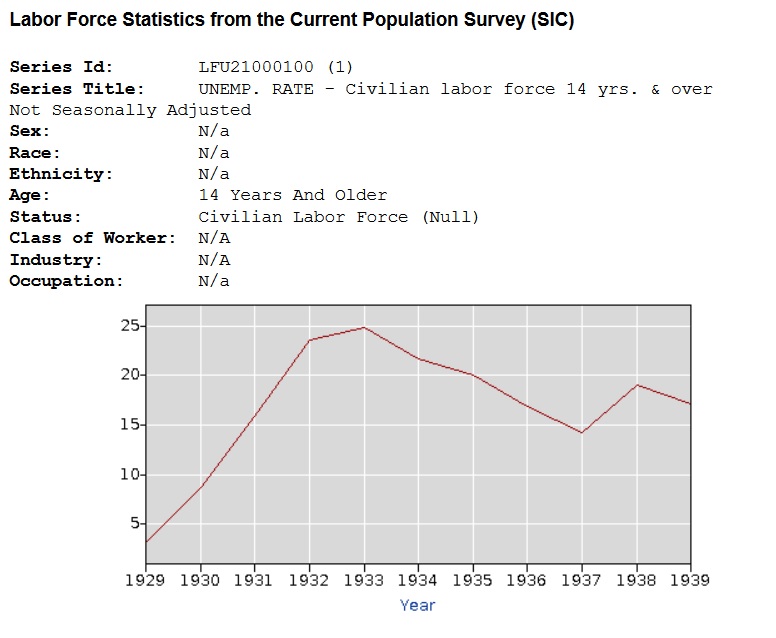Category: Data Source
Gift card rescue: bid-ask spreads
On the secondary market, a $100 Brooks Brothers gift card is worth $90 but a $100 Home Depot card is worth $95. Here are further prices (update: the link is now shut down).
For the pointer I thank Robert, a loyal MR reader.
GM fact of the day
As Mark Steyn pointed out on NRO, GM now has a market valuation about a third of Bed, Bath and Beyond.
Here is the link. The Steyn article also offers this:
GM has 96,000 employees but provides health benefits to a million people.
Gold fact of the day
…the world produces a cube of gold that is about 4.3 meters (about 14
feet) on each side every year. In other words, all of the gold produced
worldwide in one year could just about fit in the average person’s
living room!
The total amount of gold, ever produced by mankind, is estimated to fill only one-third of the Washington Monument. Here are the calculations, including an estimate for the even more scarce platinum. Hat tip to Jason Kottke.
Pre-stimulus picture

Here is my source. Call it crude extrapolation, or say that we should have been running a surplus for the last eight years, but in any case this is where we are at.
Safest and most dangerous U.S. cities
Here is a list, via Craig Newmark. For the large cities, note that of the five safest (San Jose, Honolulu, El Paso, New York, Austin), I believe four have substantial Latino populations. San Diego and San Antonio are next in line for safety. Of the five least safe major cities (Detroit, Baltimore, Memphis, Washington, Philadelphia), none has an especially large Latino population.
Here is a bit more. Here is a lot more.
Infrastructure fact of the day
Spending [on infrastructure] is up 50 percent over the last 10 years, after adjusting for inflation. As a share of the economy, it will be higher this year than in any year since 1981.
That’s from another excellent column by David Leonhardt. The real problem, of course, is the quality of our decisions on infrastructure.
Facts about automakers
Yermack estimates that the aggregate capital investment in GM and Ford since 1980 has led to a net reduction in capital of $465 billion…This is what I find particularly disturbing: with that $465 billion, “GM and Ford could have closed their own facilities and acquired all of the shares of Honda, Toyota, Nissan, and Volkswagen.”
Here is more. And here are facts about GM wages.
Where has all the income gone?
-
The U.S. Census Bureau reports that median household
income stagnated from 1976 to 2006, growing by only 18 percent. In
contrast, data from the Bureau of Economic Analysis indicate that
income per person was up 80 percent. -
Three data issues adversely impact reported median household income gains: the choice of price index, a change in the mix of household types and the measure of income used.
-
After adjusting the Census data for these three issues, inflation-adjusted median household income for most household types is seen to have increased by 44 percent to 62 percent from 1976 to 2006.
That’s from Terry Fitzgerald at the Minneapolis Fed. I am not sure if he is asserting that his alternatives measures are just that — alternative measures — or if they are the true and correct measures in the sense of being better than the alternatives. In any case this is the latest look at a long-contentious issue. I thank Don Boudreaux for the pointer.
China fact of the day
Electrical power generated in October is 4% below a year earlier.
Is there any chance that this is more reliable information than the gdp statistics offered up by the Chinese government?
The word of the year
That’s from Oxford. Runners-up were moofer and topless meeting.
The first two sound British to me and all three sound silly. I would have picked "Tweet."
The ten most irritating phrases?
Here is one list:
The top ten most irritating phrases:
1 – At the end of the day
2 – Fairly unique
3 – I personally
4 – At this moment in time
5 – With all due respect
6 – Absolutely
7 – It’s a nightmare
8 – Shouldn’t of
9 – 24/7
10 – It’s not rocket science
I thank Yang He for the pointer. At the end of the day, what would you add to this fairly unique list? With all due respect, I personally, at this moment in time, absolutely shouldn’t of suggested that it’s not rocket science because 24/7 people are saying this and it is literally a nightmare.
China market of the day
From a loyal MR reader:
I just read that there is a company in China hiring young females who are paid to get pregnant and deliever a baby for couples suffering from infertility.The interesting thing is the price discrimination. There are eight types of females with different "qualities".Example: Females who are middle school graduates and are not very pretty receive 40,000 RMB.Females who have bachelor’s degree and are pretty receive 100,000 RMB.
Unemployment During the Great Depression
Regarding unemployment during the Great Depression, Andrew Wilson writing at the WSJ recently said:
As late as 1938, after almost a decade of governmental “pump priming,” almost one out of five workers remained unemployed.
 Historian Eric Rauchway says this is a lie, a lie spread by conservatives to besmirch the sainted FDR. Nonsense. In 1938 the unemployment rate was 19.1%, i.e. almost one out of five workers was unemployed, this is from the official Bureau of Census/Bureau of Labor Statistics data series for the 1930s. You can find the series in Historical Statistics of the United States here (big PDF) or here. The graph is at right. Rauchway knows this but wants to measure unemployment using an alternative series which shows a lower unemployment rate in 1938 (12.5%). Nothing wrong with that but there’s no reason to call people who use the official series liars.
Historian Eric Rauchway says this is a lie, a lie spread by conservatives to besmirch the sainted FDR. Nonsense. In 1938 the unemployment rate was 19.1%, i.e. almost one out of five workers was unemployed, this is from the official Bureau of Census/Bureau of Labor Statistics data series for the 1930s. You can find the series in Historical Statistics of the United States here (big PDF) or here. The graph is at right. Rauchway knows this but wants to measure unemployment using an alternative series which shows a lower unemployment rate in 1938 (12.5%). Nothing wrong with that but there’s no reason to call people who use the official series liars.
So why are there multiple series on unemployment for the 1930s? The reason is that the current sampling method of estimation was not developed until 1940, thus unemployment rates prior to this time have to be estimated and this leads to some judgment calls. The primary judgment call is what do about people on work relief. The official series counts these people as unemployed.
Rauchway thinks that counting people on work-relief as unemployed is a right-wing plot. If so, it is a right-wing plot that exists to this day because people who are on workfare, the modern version of work relief, are also counted as unemployed. Now if Rauchway wants to lower all estimates of unemployment, including those under say George W. Bush, then at least that would be even-handed but lowering unemployment rates just under the Presidents you like hardly seems like fair play.
Moreover, it’s quite reasonable to count people on work-relief as unemployed. Notice that if we counted people on work-relief as employed then eliminating unemployment would be very easy – just require everyone on any kind of unemployment relief to lick stamps. Of course if we made this change, politicians would immediately conspire to hide as much unemployment as possible behind the fig leaf of workfare/work-relief.
There is a second reason we may not want to count people on work-relief as employed and that is if we are interested in the effect of the New Deal on the private economy. In other words, did the fiscal stimulus work to restore the economy and get people back to work? Well, we can’t answer that question using unemployment statistics if we count people on work-relief as employed. Notice that this was precisely the context of the WSJ quote.
One final thing that one could do is count people on work-relief as neither employed nor unemployed, i.e. not part of the labor force which is what we do for people in the military. Rauchway has data on this and it shows almost the same thing, nearly one in five unemployed, as the original series. (In this case, however, Rauchway counts nearly one in five unemployed as a win for the New Deal because the same series also shows higher unemployment earlier in the Great Depression.)
Any way you slice it there is no right-wing plot to raise unemployment rates during the New Deal and a historian should not go around calling people liars just because their judgment offends his wish-conclusions.
Hat tip to Mark Thoma.
Betting markets in everything
Right now the odds are running 4-1.
I thank Chris F. Masse for the pointer.
Speaking of markets and empirical verification, here is $300 million for the University of Chicago Business School.
And here is how markets clear in Nigeria.
The iPod Nano index
You’ll find it here. It seems that Australia has the cheapest iPod, followed by Indonesia and Canada. Argentina has the most expensive iPod, even though it is generally a very cheap country. These figures are listed as from October 2008, but I wonder if Iceland still has the sixth most expensive iPod Nano?
I thank John De Palma for the pointer.